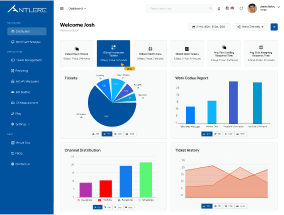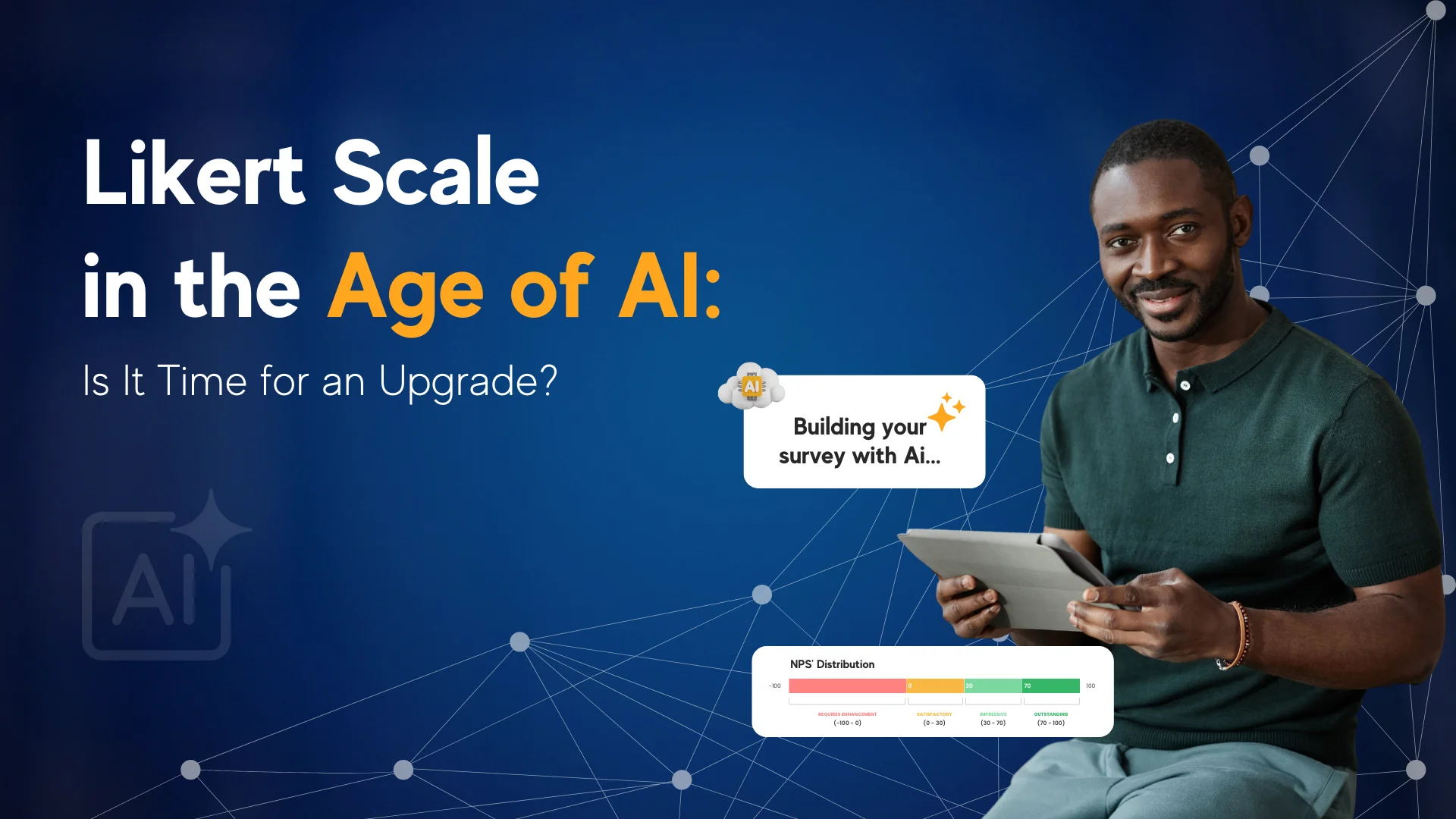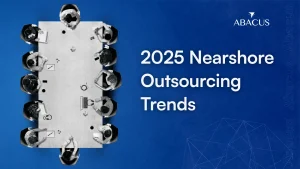Likert Scale in the Age of AI: Is It Time for an Upgrade?
For nearly a century, the Likert scale has been a cornerstone of surveys, giving researchers and businesses a structured way to capture opinions.
The simplicity of moving from “strongly disagree” to “strongly agree” has helped make it one of the most ubiquitous tools in customer satisfaction surveys, employee engagement studies and academic research.
But it’s 2020, and we live in the era of AI where context, personalization and predictive analytics are the keys to success so you may wonder: can you still rely on the Likert scale or is it out-of-date?
Both customer and employee experiences have become too complex for such blunt instruments as static scales to capture the full range of those interactions.
Although the Likert scale provides structure and comparability, AI tools are enabling organizations to access richer emotional, behavioral and contextual insights which traditional tools tend to lack.
What is the Likert Scale?
The Likert Scale Developed by Rensis Likert in the 1930s, this tool is used to gauge attitudes and opinions through a numerical system of values.
An example would be in the form of a phrase such as “I am satisfied with the product I bought.” And then a scale is attached to it of say 5 or 7 points from strongly disagree to strongly agree.
(That’s why subjective feelings can be measured in the first place.)
This is one reason the Likert scale has been so persistent throughout different industries. Data is collected, compared and analyzed by researchers with minimal effort, in a standardized way that businesses have used to assess trends in customer satisfaction or office morale for generations.
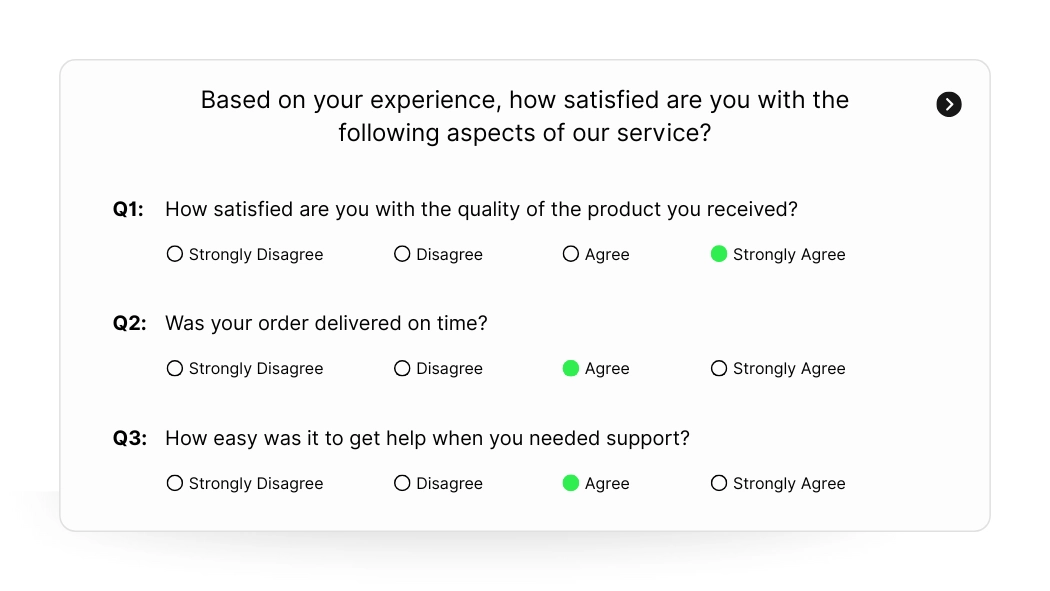
Why the Likert Scale Endures
Even in the present dynamic digital age, the Likert scale is still appealing due to its simplicity and cost efficiency.
Respondents get it right away, so there is less confusion on a survey. It really works well for researchers as the responses are straightforward and easy to count, compare and document.
There are lots of organizations including HR, healthcare and market research that continue to rely heavily on it for its simplicity.
But longevity doesn’t mean perfection. The very attributes that make the Likert scale attractive are also what limit it. Now, people are hardly binary, but we have this scale that forces them to.
The Challenges in the AI Era
The main downside of the Likert scale is that it doesn’t allow for much granularity. One who selects “agree” to a satisfaction question might still have frustrations that go unreported.
Differences in culture also affect how stances of neutrality or extremes are interpreted by individuals.
Inaccuracies can be instigated by inconsistent answers or response bias leading to a weakening of decision-control drawn from results.
According to the Pew Research Center (2022), 35% of respondents returned inconsistent responses when asked questions in this manner.
This brings up an important point: companies could be making strategic business decisions based on incomplete or manipulated reporting.
How AI is Changing Feedback Collection
Artificial Intelligence is changing the way enterprises calculate sentiment and satisfaction. Unlike conventional surveys that make use only of numbers, AI tools can understand the implications hidden in text, speech, and behavior.
For example, NLP can review thousands of open-ended comments to see how customer sentiment is trending.
Predictive analytics enables organizations to predict future behavior, for example – churn risk, based on feedback already provided.
Even the tone of voice in customer support calls can now be scrutinized for evidence of dissatisfaction that a numerical rating might miss.
And whereas the Likert scale is the tool of deep, structured data AI brings context, emotion and prediction to knowledge in ways that helps make us better human beings.
The Rise of Hybrid Models
The Likert scale isn’t being abandoned by forward-thinking organizations. Rather they are using track AI-driven methods to create a more complete and precise feedback cycle.
A retail company, for example, can still invite people to rate their satisfaction on a scale of one to five stars but will also crunch product reviews and chat transcripts with machine learning.
In the same way, HR professionals mix Likert-based engagement surveys with AI-powered tools that analyze how employees talk to leadership about their situation.
This model does provide a good mix of structured comparison and deep contextual understanding.
Statistics That Highlight the Shift
It should be clear that there is a growing trend in the industry towards hybridization. SurveyMonkey Survey 2023 found that 80 percent of organizations persisted with Likert items as the bedrock of feedback capture So, one Forrester report (2023) even found that 65% of customer experience leaders feel that traditional surveys do a poor job capturing authentic emotions from consumers.
What this suggests is clear: the Likert scale is here to stay but it no longer has the capacity as a standalone tool to deliver the granularity/precision that businesses demand.
Likert Scale vs. AI-Enhanced Approaches
For reference, think of the typical Likert survey vs. an AI-generated analysis. The first is clarity and comparability, the second depth and flexibility.
A Likert scale will show you that 70 percent of your customers are satisfied. AI solutions unveil “why they are happy”, which segments are prone to dissatisfaction and what steps will make them happier.
A McKinsey study (2023) reveals that companies with the use of AI-based customer feedback analysis realize 40% more actionable insights than those only using traditional scale methodologies.
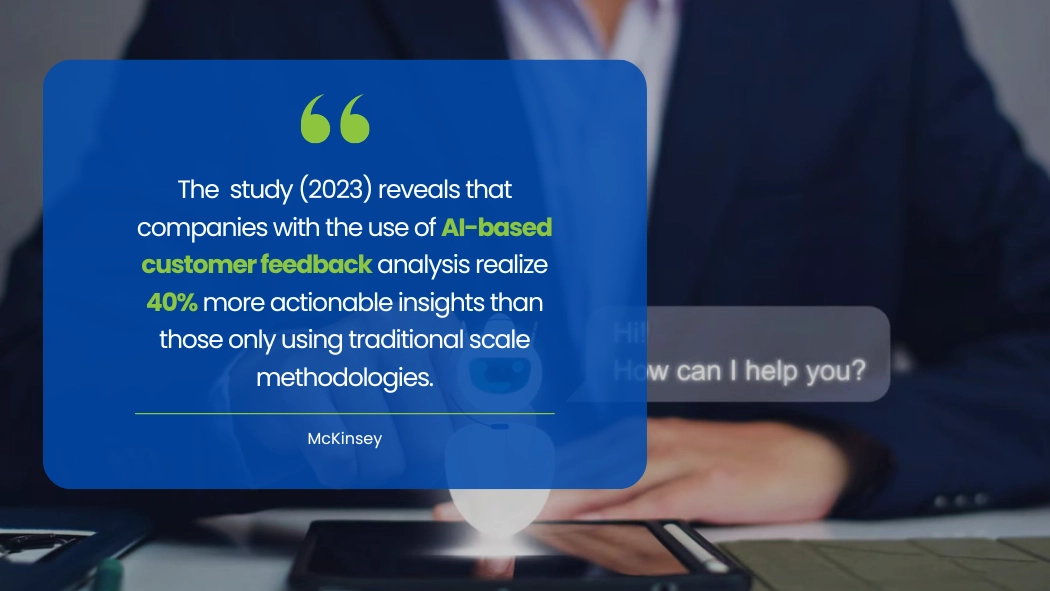
Looking Ahead: What’s Next for Experience Measurement
The way forward with feedback isn’t to abandon the Likert scale, but to augment it with AI. We will see more real-time feedback loops, where conversations with customers are listened to and analyzed as they occur rather than in static surveys.
Feedback, too, will become more tailored as AI adjusts the questions or methods of measurement based on the day.
Enquiries will thus bring companies and researchers that much closer to a complete representation of human opinions, which no five-point scale can ever encompass.
Conclusion
The Likert scale is also a proven measure that has been used with success for many years. But in the era of AI, where customers demand personalized content and executives need predictive insights, gut feeling just can’t be the only tool used to make decisions.
This bridges the structured clarity of Likert scale with AI-enhanced nuance and depth, allowing organizations to have a richer understanding of customer and employee experiences from both qualitative and quantitative perspectives.
The Likert scale is not outdated; it has to be updated.
With AI as a wingman, this well-paced tool can still lead the charge in how we measure experience Going forward.

Author

